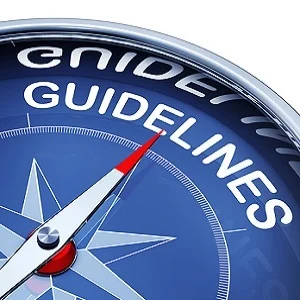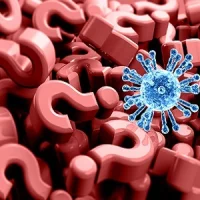The severe acute respiratory syndrome coronavirus 2 (SARS-CoV-2) is causing rapidly spreading illness, and COVID-19 has now affected thousands of people around the world. Clinicians are in urgent need of guidance to deal with this crisis.
A panel of 36 experts from 12 countries proposed 53 questions, reviewed literature for direct and indirect evidence on the management of COVID-19 in critically ill patients in the ICU, and identified relevant and recent systemic reviews related to supportive care. Based on this analysis and their assessment, the Surviving Sepsis Campaign COVID-19 panel has issued 54 statements, which include four best practice statements, nine strong recommendations, and 35 weak recommendations.
Here is a quick overview of the key recommendations and suggestions from the panel:
Infection Control
Adherence to infection control precautions is paramount as per these new guidelines. Preliminary data from Chinese CDC suggests that a considerable burden of SARS-CoV-2 infection among healthcare workers, which in itself increases the risk of transmission. Therefore, healthcare workers who are performing aerosol-generating procedures such as endotracheal intubation, bronchoscopy, open suctioning, nebulized treatment, manual ventilation before intubation, tracheostomy or CPR on patients with COVID-19, must do so using fitted respirator masks and should also ensure they use personal protective equipment including gloves, gown, and eye protection through face shield or safety goggles. These procedures should ideally be performed in a negative pressure room to reduce the risk of cross-contamination, and the presence of unnecessary staff should be avoided. In addition, healthcare workers providing usual care for non-ventilated COVID-19 patients should use medical masks, and those performing non-aerosol generating procedures on mechanically ventilated patients should use surgical/medical masks. Endotracheal intubation should be performed by the most experienced staff members to minimise the number of attempts and risk of transmission.
Diagnosis and Testing
The guidelines recommend that for intubated and mechanically ventilated patients with suspicion of COVID-19, obtaining lower respiratory tract samples would be better. Endotracheal aspirates should be preferred over bronchial wash or bronchoalveolar lavage. A single negative swab may not rule out SARS-CoV-2 infection, hence repeated samples from multiple sites could increase diagnostic yield. Testing should not be delayed if the suspected risk of infection is high.
Haemodynamic Support
Data from China shows a variable prevalence of shock in adults with COVID-19. Cardiac injury has been reported in 7 to 23% of patients, while shock has been cited as the main reason for death. Using dynamic parameters, skin temperature, capillary refilling time, and lactate assessment of fluid responsiveness is recommended.
Fluids
The guidelines recommend the use of a conservative fluid strategy for acute resuscitation. Using crystalloids over colloids is recommended. The use of hydroxyethyl starches, gelatins, dextrans, and albumin is not recommended.
Vasoactive agents
Titrating to a target MAP of 60-65 mmHg is suggested. Norepinephrine should be first-line vasoactive agent, but if it is not available, vasopressin or epinephrine can be used. However, dopamine is not recommended if norepinephrine is not available as it can cause harm and increase mortality. Vasopressin can be added as a second-line agent, over titrating NE dose, if target MAP cannot be achieved. If shock with cardiac dysfunction and persistent hypoperfusion is present, dobutamine should be added over increasing NE dose. In case of refractory shock low-dose corticosteroid therapy is recommended.
Non-invasive Support
The prevalence of hypoxic respiratory failure in patients with COVID-19 is approximately 19%. According to first reports, 14% will develop severe disease and may require oxygen therapy, while 5% will require admission to the ICU and mechanical ventilation. In adult patients with COVID-19, the guidelines suggest starting supplemental oxygen if the peripheral oxygen saturation is <92% and recommend starting supplemental oxygen if Spo2 is <90%. In case of acute hyoxaemic respiratory failure on oxygen, it is recommended that Spo2 should be maintained no higher than 96%.
Invasive Mechanical Ventilation
In mechanically ventilated patients with COVID-19 and ARDS, the guidelines recommend using low tidal volume ventilation over higher tidal volumes. The panel recommends targeting plateau pressures (Pplat) of <30 cm H2O). Also, a higher PEEP strategy should be used over a lower PEEP strategy, and patients should be monitored for barotrauma. A conservative fluid strategy should be used in COVID-19 patients with ARDS over a liberal fluid strategy. Prone ventilation for 12 to 16 hours is suggested in patients with moderate to severe ARDS. Guidelines also suggest using intermittent boluses of neuromuscular blocking agents over continuous NMBA infusion. In case of persistent ventilator dyssynchrony, the need for ongoing deep sedation, prone ventilation, or
persistently high plateau pressures, a continuous NMBA infusion for up to 48 hours is suggested. The recommendations advise against the use of inhaled nitric oxide in mechanically ventilated adults with COVID-19 ARDS. In patients with severe ARDS and hypoxaemia despite optimised ventilation and other strategies, a trial of inhaled pulmonary vasodilator can be used as rescue therapy. If no improvement is observed, the treatment should be tapered off.
Therapy
In adult COVID-19 patients with respiratory failure on mechanical ventilation without ARDS, the routine use of systematic corticosteroids is not suggested. To date, there is insufficient evidence for a recommendation on corticosteroids in COVID-19 and ARDS. In COVID-19 patients with respiratory failure on mechanical ventilation, using antimicrobials/antibacterial agents compared to no antimicrobials is suggested. For patients with hypoxic respiratory failure on mechanical ventilation, empiric antimicrobial treatment is suggested. Suspected or confirmed cases of COVID-19 should be treated with empiric antimicrobial therapy. Reports show that the majority of COVID-19 patients will develop fever during hospitalisation hence using pharmacologic agents for temperature control is suggested with acetaminophen.
In critically ill adults with COVID-19, routine use of standard intravenous immunoglobulins is not suggested, and the routine use of convalescent plasma from previously recovered patients is also not suggested. In addition, there is not enough evidence to issue recommendations on the use of recombinant interferons, antiviral agents, tocilizumab, chloroquine, hydroxychloroquine, nafamostat, and nitazoxanide.
Source: Critical Care Medicine, ESICM
Image Credit: iStock
References:
Waleed et al. (2020) Surviving Sepsis CampaignGuidelines on the Management of Critically Ill Adults with Coronavirus Disease 2019 (COVID-19). Critical Care Medicine. doi: 10.1097/CCM.0000000000004363
Latest Articles
mechanical ventilation, surviving sepsis guidelines, Fluid therapy, Coronavirus, COVID-19, non-invasive support
The severe acute respiratory syndrome coronavirus 2 (SARS-CoV-2) is causing rapidly spreading illness, and COVID-19 has now affected thousands of people ar...










